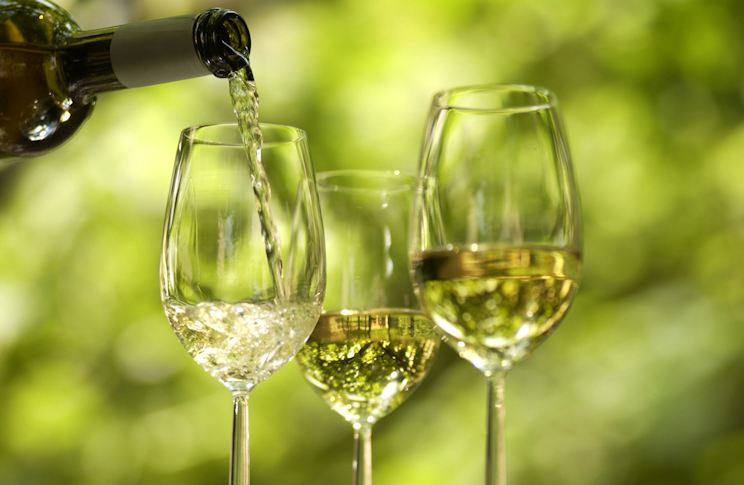Light, fruity wines that are low in alcohol are ideal summer wines and a trademark of German vintners, whose vineyards are among the most northerly in the world, and where conditions for producing light wines are ideal. According to Ernst Büscher of the German Wine Institute in Mainz: “In Germany’s wine-growing regions, grapes have a very long time to ripen and develop considerable aromas and flavors. Even though they are relatively low in alcohol (less than 12 percent by volume), the wines are rich in flavor, with a pleasant play of refreshing, fruity acidity and typical varietal aromas.”
Light Wines
Germany’s white wine varietals are particularly well-suited for light wines. A traditional Riesling Kabinett, or even a young Pinot Blanc or Rivaner, is really a pleasure on a mild summer evening. Red wine fans won’t go empty-handed – Trollinger wines from Württemberg or young Portugieser from Rheinhessen or the Pfalz are also tasty, light summer wines, particularly if served slightly chilled.
Although most red wines are generally somewhat more full-bodied, not least due to their naturally higher tannin content, rosé versions often offer a lighter alternative. “Blanc de Noirs” – red wine vinified with little skin contact and thus little color – is especially popular these days. Thanks to the way they are produced, rosé wines combine the fresh character of white wines with the mouth-filling flavor of red varietals.
The various “Seccos” produced in German cellars – often, with less than 11 percent alcohol by volume – are also ideal summer apéritifs. Their carbon dioxide lends them a refreshing, light effervescence.
Light Wines with Light Cuisine
Light wines are also in tune with today’s trend toward healthier eating. They’re excellent with low-cal, light cuisine, such as salads or menus featuring lots of vegetables. Ernst Büscher adds: “Light wines that are relatively low in alcohol (ca. 11-12 percent by volume) are by far the best partners with very spicy dishes. High alcohol intensifies spiciness on the palate.” Off-dry wines, such as Riesling, subdue the heat of spices and Riesling’s fruity acidity lends dishes a pleasant freshness. Mildly seasoned, stir-fried vegetables and fish go well with light Weiss- or Grauburgunder (Pinot Blanc or Pinot Gris).
Served Chilled
All wines taste better in the summer if they are served a few degrees cooler than they would be in winter. Once poured, a wine warms up within a very short time – up to three degrees Celsius (37°F). As such, it’s best to serve a wine somewhat chilled. On warm days, white wines and Seccos should be chilled to 6-8°C (43-46°F), and rosés are ready for drinking when served at about 10°C (50°F). Ten to twelve degrees Celsius (50-54°F) would be about right for a chilled Trollinger.
Storage
Light wines are best consumed while young and fresh, when their fruity aromas are most pronounced. They are seldom suited for cellar aging of more than two or three years. One exception, though: Rieslings, such as those from the Mosel. Even the lighter versions are still a true pleasure after several years of aging.











